Main navigation
Search Results
-
Funding Funding programme, Funded by: European Commission, sb_search.searchresult.label.programSubmissionDate: 18/09/2024https://www.biooekonomie-bw.de/en/databases/funding/eic-transition-1 -
ProGrün project - 30/12/2023 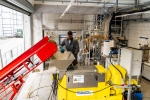
Using proteins extracted from grassland cuttings to produce animal feed and exploit by-product streams
Animal feed often contains protein from soy and importing it causes major environmental harm. In the ProGrün project, researchers at the University of Hohenheim, including a work group led by Prof. Dr. Andrea Kruse, are developing a scalable technological process to extract proteins from grassland cuttings and use them to make sustainable animal feed produced in the region where it will be used.
https://www.biooekonomie-bw.de/en/articles/news/using-proteins-extracted-grassland-cuttings-produce-animal-feed-and-exploit-product-streams -
Alternative construction materials: mycelium-based materials - 20/12/2023 
Using fungi to create sustainable and economical mycelium-based materials
Most of us see fungi as just food - and possibly pathogens. This is a mistake, because these amazing organisms are capable of much more: they grow on plant residues of all kinds, forming a dense and interconnected structure as they spread. The resulting material can be moulded into desired shapes and be turned into new sustainable and economically attractive products such as leather and polystyrene substitutes or building materials.
https://www.biooekonomie-bw.de/en/articles/news/using-fungi-create-sustainable-and-economical-mycelium-based-materials -
Facade greening with precipitation retention - 19/12/2023 
Rain-retaining living walls improve the urban climate and protect against flooding
Due to dense urbanisation and associated soil sealing, heat and heavy rainfall are becoming an increasing problem for people living in cities. Researchers at the German Institutes of Textile and Fibre Research (DITF) in Denkendorf have developed innovative living walls that not only help cool the environment, but also provide flood protection thanks to their water retention properties.
https://www.biooekonomie-bw.de/en/articles/news/rain-retaining-living-walls-improve-urban-climate-and-protect-against-flooding -
Sustainable binder alternative - 18/12/2023 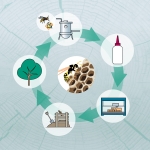
Copied from insects: new biological wood binder under development
Plastic is all around us; and unfortunately, it is not going away any time soon. The search for more sustainable solutions is fully underway. However, binders that degrade only with difficulty or not at all are still used to bond natural materials such as wood and straw - not yet truly environmentally friendly. Fraunhofer researchers are working on an insect-inspired wood binder that makes bonded wood products both resistant and biodegradable.
https://www.biooekonomie-bw.de/en/articles/news/copied-insects-new-biological-wood-binder-under-development -
urban BioEconomyLab - 07/12/2023 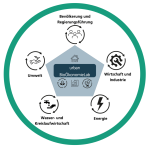
The city as a living laboratory for a bioeconomic, sustainable economic area
Baden-Württemberg is leading the way in the transition to a climate-neutral and sustainable economy. One of the projects undertaken is the Fraunhofer IGB’s "urban BioEconomyLab" project which aims to develop a transformation model and living laboratory to find bioeconomic solutions for the sustainable design of cities and municipal industry. What is new is that the IGB takes a systemic approach, focusing on biobased and circular value…
https://www.biooekonomie-bw.de/en/articles/news/city-living-laboratory-bioeconomic-sustainable-economic-area -
Recent research shows effectiveness of biosurfactants - 28/11/2023 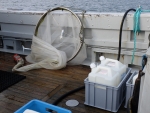
Combating oil spills - biosurfactants can stimulate microbial oil degradation
Oil spills from drilling platforms and tankers cause environmental pollution and a loss of biodiversity. Researchers at the University of Stuttgart, among others, are now using biosurfactants to improve the management of oil spills: their latest research shows that biosurfactants lead to better microbiological degradation of oil components in seawater compared to conventional dispersants.
https://www.biooekonomie-bw.de/en/articles/news/combating-oil-spills-biosurfactants-can-stimulate-microbial-oil-degradation -
The AlbLavendel project - 20/11/2023 
Swabian lavender cultivation: aesthetic and sustainable
Blue-violet, fragrant fields like those in Provence may soon become a common sight in the Swabian Alb. As part of the AlbLavendel project, the University of Hohenheim along with the company naturamus GmbH and the German Institutes of Textile and Fibre Research Denkendorf has started to investigate the cultivation of lavender, the production of essential oils and the use of distillation residues for producing textile fibres in the local region.
https://www.biooekonomie-bw.de/en/articles/news/swabian-lavender-cultivation-aesthetic-and-sustainable -
Event - Sharing Knowledge about: Insect Biorefineries and AI Tools
Online, Informationsveranstaltunghttps://www.biooekonomie-bw.de/en/events/sharing-knowledge-about-insect-biorefineries-and-ai-tools -
Climate-neutral wastewater treatment plants thanks to patented real-time analytics - 08/11/2023 
Using AI to reduce greenhouse gases in wastewater companies
The wastewater industry is responsible for global greenhouse gas emissions equivalent to those of global aviation. The start-up Variolytics has found a way to significantly reduce greenhouse gases in wastewater treatment plants using real-time analytics. The patented sensor technology and AI-supported process optimisation offer multiple benefits: in addition to reducing nitrous oxide, the system helps to reduce energy costs and resources.
https://www.biooekonomie-bw.de/en/articles/news/using-ai-reduce-greenhouse-gases-wastewater-companies -
Press release - 02/11/2023 Sustainability Innovation Campus
The Sustainability Innovation Campus (ICN) initiated by the University of Freiburg and the Karlsruhe Institute of Technology (KIT), which will begin its work in January 2024, has announced a two-year funding programme for start-up projects. Scientists from the University of Freiburg, KIT and cooperating universities and research institutions are invited to submit their project outlines by 30 November 2023.
https://www.biooekonomie-bw.de/en/articles/pm/sustainability-innovation-campus -
-
Wasser 3.0: #detect|remove|reuse - 31/10/2023 
How to sustainably remove and recycle microplastics from water
We all pollute our water with things we use in our everyday lives. In the process, microplastics and micropollutants accumulate in sometimes significant quantities and are difficult to remove. This has increasingly devastating consequences for our health and the environment. Wasser 3.0, a non-profit start-up from Karlsruhe, has declared war on this problem by developing a customisable process to detect, remove and even recycle these pollutants.
https://www.biooekonomie-bw.de/en/articles/news/how-sustainably-remove-and-recycle-microplastics-water -
Press release - 27/10/2023 Lignin coating makes Geotextiles made from environmentally friendly natural fibers durable
Textiles are a given in civil engineering. Until now, textiles made of resistant synthetic fibers have been used for this purpose, having a long lifetime. For some applications, however, it would not only be sufficient but even desirable for the auxiliary textile to degrade when it has done its job. Natural fibers, in contrast, often decompose too quickly. The DITF are developing a bio-based protective coating that extends their service life.
https://www.biooekonomie-bw.de/en/articles/pm/lignin-coating-makes-geotextiles-made-environmentally-friendly-natural-fibers-durable -
Microorganisms degrade biobased turf infill - 17/10/2023 
Eco-friendly artificial turf: a sports pitch that’s good for people and the environment
There are thousands of artificial turf pitches in Germany. They are extremely practical, but often not at all environmentally friendly. When it rains or the pitch is used, plastic particles from the rubber granules can be released into the envronment, where they remain. Researchers at the University of Stuttgart along with the company TECNARO are now developing an artificial turf with an infill that biodegrades as soon as it leaves the pitch.
https://www.biooekonomie-bw.de/en/articles/news/eco-friendly-artificial-turf-sports-pitch-s-good-people-and-environment -
Press release - 11/10/2023 Land Use: Producing More Food and Storing More Carbon
Doubling food production, saving water, and increasing carbon storage capacity – this may sound paradoxical, but would be theoretically feasible. Reaching this goal, however, would require a radical spatial reorganization of land use. This is the conclusion of researchers from Karlsruhe Institute of Technology (KIT) and the Heidelberg Institute for Geoinformation Technology (HeiGIT) of Heidelberg University.
https://www.biooekonomie-bw.de/en/articles/pm/landnutzung-mehr-nahrung-produzieren-und-gleichzeitig-mehr-kohlenstoff-speichern -
Press release - 09/10/2023 Microalgae: Environmentally friendly and healthy alternative to fish
Researchers at the University of Hohenheim are working on an alternative to fish consisting of microalgae. Advantage: Microalgae have high quality ingredients and also contribute to carbon storage.
https://www.biooekonomie-bw.de/en/articles/microalgae-environmentally-friendly-and-healthy-alternative-fish -
Preventing waste from instant meals - 05/10/2023 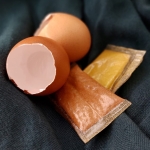
EDGGY: edible packaging film made from eggshell waste
Many instant meals such as ramen soups have both a protective outer packaging and individual ingredients in small plastic sachets. To prevent this environmentally harmful waste, five students at the University of Hohenheim have developed a sustainable film based on eggshells and plant proteins that dissolves in hot water and is edible.
https://www.biooekonomie-bw.de/en/articles/news/edggy-edible-packaging-film-made-eggshell-waste -
Press release - 29/09/2023 Ecological alignment of Artificial Intelligence
The European Parliament’s amendments to the proposal for a Regulation on Artificial Intelligence (AI) may be defined as a socio-ecological turnaround compared to the European Commission’s existing draft. The parliamentary draft proposes a series of environmental and climate-related provisions which, in the Oeko-Institut’s view, are feasible and technically achievable. The Oeko-Institut has reviewed these proposals in a Policy Paper.
https://www.biooekonomie-bw.de/en/articles/pm/ecological-alignment-artificial-intelligence -
Press release - 27/09/2023 Raw material requirements for reducing global poverty calculated for the first time
Researchers at the University of Freiburg quantify the amount of material needed to enable people to live without poverty. 1.2 billion people live in poverty. To lift them out of it, an average of about six tons of raw materials are needed per person and year – in particular minerals, fossil fuels, biomass and metal ores. This is the result of a study by researchers from the Chair of Sustainable Energy and Material Flow Management.
https://www.biooekonomie-bw.de/en/articles/pm/raw-material-requirements-reducing-global-poverty-calculated-first-time -
Press release - 26/09/2023 Local Food Systems: How sustainable are the business models for local food chains?
Mobile units for processing fruit and vegetables on-site may play an important role in food supply in 2035. The EU’s FOX project investigated the form that such local food chains might take. To this end, Fraunhofer ISI developed future scenarios that could be used to test the viability of business models for regional food processing and distribution.
https://www.biooekonomie-bw.de/en/articles/pm/local-food-systems-how-sustainable-are-business-models-local-food-chains -
Press release - 25/09/2023 Autonomous outdoor navigation for machines used in farming, livestock and forestry
Autonomous and robust navigation is an essential capability for agricultural robots or machines that are to reach a new level of autonomy to manoeuver safely and reliably in their environment. Fraunhofer IPA will showcase what is currently technologically and economically feasible with live demos at agritechnica, the agricultural trade fair taking place in Hanover from November 12 to 18, 2023.
https://www.biooekonomie-bw.de/en/articles/pm/autonomous-outdoor-navigation-machines-used-farming-livestock-and-forestry -
Press release - 14/09/2023 The Cultivated B Initiated Pre-Submission Process towards EFSA Certification for Cultivated Sausage
The Cultivated B (TCB) began discussions with the European Food Safety Authority (EFSA) and officially entered the pre-submission process for novel food approval of a novel or non-farmed sausage product. Subsequent to the official submission, TCB will emerge as world’s first biotech company to apply for EFSA certification for cultivated meat. This is a pivotal first step in the evolution of the cultivated meat market.
https://www.biooekonomie-bw.de/en/articles/pm/cultivated-b-initiated-pre-submission-process-towards-efsa-certification-cultivated-sausage -
Event - - Bioeconomy Forum 2023
Berlin, Kongress/Symposiumhttps://www.biooekonomie-bw.de/en/events/bioeconomy-forum-2023 -
Food of the future: new production methods - 06/09/2023 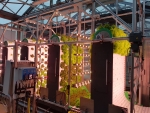
NewFoodSystems: innovation space for tomorrow’s food
A rapidly growing world population and simultaneously rapidly shrinking arable land – these are just some of the major challenges facing the food industry. But how can solutions be found? Answers are being sought by the bioeconomy innovation space NewFoodSystems. Funded by the German Federal Ministry of Education and Research (BMBF), it is a network where science and industry can come together to develop sustainable food systems of the future.
https://www.biooekonomie-bw.de/en/articles/news/newfoodsystems-innovation-space-tomorrows-food -
Press release - 30/08/2023 Soil Salinity: Wild Grapevine Defends Itself
Rising sea levels due to climate change and artificial irrigation cause soil salinity to increase. This has a negative impact on agriculture, including viticulture. The plants die, yields decrease. Researchers of Karlsruhe Institute of Technology (KIT) have therefore studied a wild grapevine of higher salt tolerance. Their goal is to identify the genetic factors that make the grapevine resilient.
https://www.biooekonomie-bw.de/en/articles/pm/soil-salinity-wild-grapevine-defends-itself -
Press release - 07/08/2023 Vegan trend in Europe: In Germany, milk substitutes from plants are most popular alternative
Germany has the most active market, Southern Europe wants more variety, and people in Poland find dairy substitutes too expensive, according to a recent study by the University of Hohenheim.
https://www.biooekonomie-bw.de/en/articles/pm/vegan-trend-europe-germany-milk-substitutes-plants-are-most-popular-alternative -
-
-
-
Press release - 27/07/2023 Self-healing plastic becomes biodegradable
Konstanz chemists develop mineral plastics with numerous positive properties from sustainable basic building blocks and, together with biologists, demonstrate the material's excellent microbiological degradability.
https://www.biooekonomie-bw.de/en/articles/pm/Self-healing-plastic-becomes-biodegradable -
Press release - 27/07/2023 Materials Research: Biocatalytic Foams of Tremendous Stability and Activity
Industrial biocatalysis with enzymes is deemed to be a “game changer” in the development of a sustainable chemical industry. Enzymes can be used to synthesize an impressive range of complex molecules. Researchers of KIT have now developed a new class of materials by producing enzyme foams of tremendous stability and activity. The researchers have already filed a patent application on the process to produce enzyme foams.
https://www.biooekonomie-bw.de/en/articles/pm/materials-research-biocatalytic-foams-tremendous-stability-and-activity -
Press release - 25/07/2023 Glyphosate impairs learning in bumblebees
What impacts do agrochemicals have on the ongoing global insect decline? Biologists at the University of Konstanz have found out that aversive learning is impaired in bumblebees exposed to glyphosate. Their study is published in the journal Science of the Total Environment.
https://www.biooekonomie-bw.de/en/articles/pm/glyphosate-impairs-learning-bumblebees -
Press release - 25/07/2023 Green Genetic Engineering: Making Mendel’s Dream Come True with Molecular Scissors
Molecular biologist Professor Holger Puchta from KIT is granted funding within a Reinhart Koselleck Project by the German Research Foundation (DFG) for work on specific restructuring of plant genomes. Puchta, a pioneer of green genetic engineering, has used molecular scissors in plants for 30 years now. His new project is aimed at using the CRISPR/Cas method to freely combine genes in crops, thus making Gregor Mendel’s dream come true.
https://www.biooekonomie-bw.de/en/articles/pm/green-genetic-engineering-making-mendels-dream-come-true-molecular-scissors -
Press release - 21/07/2023 Biosurfactants might offer an environmentally friendly solution for tackling oil spills
Can biosurfactants increase microbiological oil degradation in North Sea seawater? An international research team from the universities of Stuttgart und Tübingen, together with the China West Normal University and the University of Georgia, have been exploring this question and the results have revealed the potential for a more effective and environmentally friendly oil spill response.
https://www.biooekonomie-bw.de/en/articles/pm/biosurfactants-might-offer-environmentally-friendly-solution-tackling-oil-spills -
Press release - 18/07/2023 Robotically manufactured timber construction as a model for resource-efficient construction
As the world's population continues to grow, the construction industry faces the challenge of using fewer resources and switching to sustainable materials. Scientists from the Universities of Stuttgart and Freiburg are developing new interdisciplinary approaches to construction for the future.
https://www.biooekonomie-bw.de/en/articles/pm/robotically-manufactured-timber-construction-model-resource-efficient-construction -
Press release - 12/07/2023 Danger for the world's oceans and biodiversity
Insightful study with participation from the University of Konstanz warns of human-induced impacts on the marine ecosystem.
https://www.biooekonomie-bw.de/en/articles/pm/gefahr-fuer-weltmeere-und-biodiversitaet -
Press release - 10/07/2023 Freiburg researchers investigate wildlife populations in ten large protected areas in Germany for the first time
7591 red deer, 3443 roe deer, 4876 wild boar, 36 wolves, 16 lynxes and 227 red foxes: These are the results of the first standardised monitoring of wildlife populations in ten large protected areas in Germany. It was carried out by scientists at the University of Freiburg led by Prof. Dr. Marco Heurich and Dr. Christian Fiderer from the Faculty of Environment and Natural Resources.
https://www.biooekonomie-bw.de/en/articles/pm/freiburg-researchers-investigate-wildlife-populations-ten-large-protected-areas-germany-first-time -
Event - - Cellulose Fibres Conference
Cologne and Online, Kongress/Symposiumhttps://www.biooekonomie-bw.de/en/events/cellulose-fibres-conference -
Press release - 30/06/2023 Rain-Retaining Living Wall combines densification with flood protection
Climate change is causing temperatures to rise and storms to increase. In inner cities, summers are becoming a burden for people. Densification increases the amount of sealed surfaces. Green facades bring more green into cities. If textile storage structures are used, they can even actively contribute to flood protection. The German Institutes of Textile and Fiber Research (DITF) have developed a "Living Wall".
https://www.biooekonomie-bw.de/en/articles/pm/rain-retaining-living-wall-combines-densification-flood-protection -
Press release - 26/06/2023 How coral reefs can survive climate change
Astonishing results published from individual projects of the Tara Pacific expedition studying coral reefs – the entire dataset is made publicly available – coordinator is a biologist from the University of Konstanz
https://www.biooekonomie-bw.de/en/articles/pm/how-coral-reefs-can-survive-climate-change -
Press release - 21/06/2023 Technology Assessment: KIT Advises Bundestag for Another Five Years
The Institute for Technology Assessment and Systems Analysis of Karlsruhe Institute of Technology (KIT) has been entrusted with the continued operation of the Office of Technology Assessment at the German Bundestag (TAB) in the next five years until 2028. This unanimous decision was taken by the Parliament Committee for Education, Research, and Technology Assessment during today’s meeting (June 21, 2023).
https://www.biooekonomie-bw.de/en/articles/pm/Technology-Assessment-KIT-Advises-Bundestag-for-Another-Five-Years -
Innovative materials - 14/06/2023 
Reinventing ‘wood’ with programmable bacteria
Conserving wood by producing furniture and other objects from wood-based materials with the help of microorganisms? That is exactly what a team of researchers from the University of Freiburg and the Leibniz Institute for New Materials (INM) in Saarbrücken is working on in the DELIVER project. The aim is to create a database of materials with a broad range of controllable properties for various applications that can be produced from wood waste.
https://www.biooekonomie-bw.de/en/articles/news/reinventing-wood-programmable-bacteria -
Press release - 30/05/2023 Light conveyed by the signal transmitting molecule sucrose controls growth of plant roots
Team of Freiburg researchers shows how information about the quantity of absorbed light passes from the leaves to the roots. Plant growth is driven by light and supplied with energy through photosynthesis by green leaves. It is the same for roots that grow in the dark – they receive the products of photosynthesis, in particular sucrose, i.e. sugar, via the central transportation pathways of phloem.
https://www.biooekonomie-bw.de/en/articles/pm/licht-steuert-das-wachstum-von-pflanzenwurzeln-vermittelt-durch-das-signalmolekuel-saccharose -
Press release - 24/05/2023 Finally delicious: New proteins to revolutionize gluten-free baked goods
Daisies, peas, canola, etc.: Researchers at the University of Hohenheim want to replace gluten protein with new alternatives. Instead of ovens, 3-D printers would be possible
https://www.biooekonomie-bw.de/en/articles/pm/endlich-lecker-neue-proteine-sollen-glutenfreie-backwaren-revolutionieren -
Press release - 22/05/2023 How plants use sugar to produce roots
Along with sugar reallocation, a basic molecular mechanism within plants controls the formation of new lateral roots. An international team of plant biologists has demonstrated that it is based on the activity of a certain factor, the target of rapamycin (TOR) protein.
https://www.biooekonomie-bw.de/en/articles/pm/how-plants-use-sugar-produce-roots -
3D-Thermocell project - 17/05/2023 
Paper instead of plastic: sustainable packaging with a good conscience
Replacing plastic – for example in packaging – is not that easy but nevertheless urgently needed. In the 3D-Thermocell project, researchers at DHBW Karlsruhe are currently developing new plastic substitute products made of thermoformable paper as a renewable resource, which should be cheap and light and easy to dispose of along with waste paper. The characterisation and application of demonstration models will start soon.
https://www.biooekonomie-bw.de/en/articles/paper-instead-plastic-sustainable-packaging-good-conscience -
Press release - 16/05/2023 Biocomposite at the Venice Architecture Biennale
This year's Venice Architecture Biennale sees itself as a "Laboratory of the Future". Bio-composites are not just dreams of the future in architecture. The German Institutes of Textile and Fiber Research (DITF) have developed a sustainable material for support profiles and connecting nodes, which will be on display at Palazzo Mora during the Biennale from May 20 to November 26.
https://www.biooekonomie-bw.de/en/articles/pm/bioverbundwerkstoff-auf-der-architektur-biennale-venedig -
Diatoms as a biorefinery - 05/05/2023 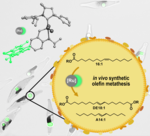
Microalgae: sustainable chemical production in a mini factory
Renewable raw materials that can be used as alternatives to fossil resources already exist. However, to turn them into everyday products, plant oils and other renewable raw materials not only have to be extracted, but often have to undergo complex chemical processing. Researchers at the University of Konstanz have now converted microalgae cells into tiny refineries to produce and upgrade raw materials, creating a supply of sustainable chemicals.
https://www.biooekonomie-bw.de/en/articles/news/microalgae-sustainable-chemical-production-mini-factory -
Press release - 03/05/2023 Rapeseed makes more than just oil – it’s a source of proteins too
At the Fraunhofer Center for Chemical-Biotechnological Processes CBP in Leuna, Germany, representatives from politics, research and industry opened a novel pilot plant for the mild processing of rapeseed to increase the added-value potential of rape as a raw material.
https://www.biooekonomie-bw.de/en/articles/pm/nicht-nur-oel-auch-proteine-aus-raps -
Press release - 03/05/2023 Organic-based coating with innovative functional properties is suitable for packaging and food products
Sustainability is a major challenge in the food and packaging industry. Plastic packaging is being replaced by organic-based and biodegradable materials, but it must still fulfill high functional requirements. A team of researchers at the University of Hohenheim has developed a new coating system that is both water-impermeable, heat-resistant, and mechanically durable as well as being suitable for consumption, and biodegradable at the same time.
https://www.biooekonomie-bw.de/en/articles/pm/organic-based-coating-innovative-functional-properties-suitable-packaging-and-food-products -
Press release - 02/05/2023 Tenure-track professorship for Soft Machines established
Milana will strengthen the research of the Cluster of Excellence Living, Adaptive and Energy-autonomous Materials (livMatS) in the field and work closely with scientists from the Freiburg Center for Interactive Materials and Bioinspired Technologies (FIT) and the Freiburg Materials Research Center (FMF).
https://www.biooekonomie-bw.de/en/articles/pm/tenure-track-professur-fuer-soft-machines-eingerichtet -
Press release - 26/04/2023 Simply EGG-genious: Students invent edible packaging from eggshells
Ready-made meals are ideal for quickly satisfying hunger. However, the quick snacks produce a lot of environmentally harmful plastic waste. To tackle this problem, the student team EDGGY from the University of Hohenheim in Stuttgart rolled up its sleeves and developed edible packaging made from eggshells and other plant-based raw materials. And even better: they simply dissolve in the hot water and can be eaten as an additional protein boost.
https://www.biooekonomie-bw.de/en/articles/pm/Simply-EGG-genious-Students-invent-edible-packaging-from-eggshells -
Press release - 25/04/2023 Jellyfish-like robots could one day clean up the world’s oceans
Roboticists at the Max Planck Institute for Intelligent Systems in Stuttgart have developed a jellyfish-inspired underwater robot with which they hope one day to collect waste from the bottom of the ocean. The almost noise-free prototype can trap objects underneath its body without physical contact, thereby enabling safe interactions in delicate environments such as coral reefs. Jellyfish-Bot could become a tool for environmental remediation.
https://www.biooekonomie-bw.de/en/articles/pm/jellyfish-robots-could-one-day-clean-worlds-oceans -
Press release - 21/04/2023 CELLUN - A fiber composite made from biopolymers
In collaboration with the project partners CG TEC, Cordenka, ElringKlinger, Fiber Engineering and Technikum Laubholz, the DITF are developing a new fiber composite material (CELLUN) with reinforcing fibers made of cellulose. The matrix of the material is a thermoplastic cellulose derivative. CELLUN made from renewable biopolymers enables the replacement of glass or carbon fibers in the production of industrial molded parts.
https://www.biooekonomie-bw.de/en/articles/pm/cellun-fiber-composite-made-biopolymers -
City of the future - 04/04/2023 
FamoS: climate protection on facades
Resource-efficient water management, photovoltaic modules and innovative facade greening - FamoS is all that. By combining proven elements, the ‘facade module with synergy’ makes a valuable contribution to combatting climate change and boosting climate resilience in cities.
https://www.biooekonomie-bw.de/en/articles/news/famos-climate-protection-facades -
Press release - 30/03/2023 Green composite material made from flax and chitosan
Composite materials provide stability in aircraft parts, sports equipment, and everyday household items. However, most of these materials have a poor carbon footprint and are not naturally degradable. A more sustainable alternative has been developed by a team from the University of Stuttgart. This completely bio-based composite material is made of flax fibers and the biopolymer chitosan.
https://www.biooekonomie-bw.de/en/articles/pm/green-composite-material-made-flax-and-chitosan -
Sustainable construction - 28/03/2023 
Digital manufacturing processes enable buildings to be constructed with flax and willow
A switch to sustainable and circular construction concepts is needed to significantly reduce greenhouse gas emissions in the construction sector. At the German National Garden Show (Bundesgartenschau) in Mannheim, FibR GmbH, together with researchers from the Karlsruhe Institute of Technology, will be showcasing two innovative buildings made from flax and willow, renewable raw materials that exemplify possible building concepts of the future.
https://www.biooekonomie-bw.de/en/articles/news/digital-manufacturing-processes-enable-buildings-be-constructed-flax-and-willow -
Residual materials with potential - 16/03/2023 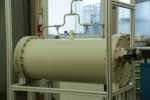
PeePower™ – energy from urine
The objective of the PeePower™ BUGA 2023 collaborative research project is to produce green hydrogen and platform chemicals from wastewater. This fits in nicely with BUGA 2023’s (German National Garden Show) four major themes, namely, climate, energy, environment and food security.
https://www.biooekonomie-bw.de/en/articles/pm/peepower-energy-urine -
Press release - 10/03/2023 Carbon fibres from lignin - a new process for economical production
A novel, both environmentally friendly and cost-saving process for the production of carbon fibers from lignin has been developed at DITF. It is characterized by high energy-saving potential. The avoidance of solvents and the use of natural raw materials make the process environmentally friendly.
https://www.biooekonomie-bw.de/en/articles/pm/carbon-fibres-lignin-new-process-economical-production -
Press release - 08/03/2023 Green gold: Torrefied biomass to replace coal and oil
In February, the Estonian-based startup New Standard Oil successfully commissioned their first industrial-scale prototype for drying and torrefaction of biogenic feedstock operating with superheated steam at atmospheric pressure.
https://www.biooekonomie-bw.de/en/articles/pm/green-gold-torrefied-biomass-replace-coal-and-oil -
Press release - 01/03/2023 Mulching time of forest meadows influences insect diversity
Researchers at the University of Freiburg have examined how mulching at different times affects insect flower-visitors and larvae.
https://www.biooekonomie-bw.de/en/articles/pm/der-mulchzeitpunkt-von-waldwiesen-beeinflusst-die-insektenvielfalt -
Press release - 28/02/2023 The Tech4Biowaste database: Getting biowaste conversion technologies out of the dark
The Tech4Biowaste database will be showcased online by its developers on 30 March 2023
https://www.biooekonomie-bw.de/en/articles/pm/tech4biowaste-database-getting-biowaste-conversion-technologies-out-dark -
Press release - 23/02/2023 Protecting the climate during textile production: polyester fibers bind CO2
Start for an EU-wide collaborative project: Under the leadership of the French company Fairbrics SAS, 17 project partners from 7 European countries are coming together. The common goal is to produce end products from polyester in a closed cycle using industrial CO2 emissions and to bring them to market maturity. The DITF produce synthetic fibers from plastics of non-fossil origin.
https://www.biooekonomie-bw.de/en/articles/pm/protecting-climate-during-textile-production-polyester-fibers-bind-co2 -
Press release - 23/02/2023 New tailwind for renewable carbon plastics in EU policy?
nova-Institute’s take on the recently published EU proposal for a Packaging and Packaging Waste Regulation as well as the new policy framework for biobased, biodegradable and compostable plastics.
https://www.biooekonomie-bw.de/en/articles/pm/new-tailwind-renewable-carbon-plastics-eu-policy -
Press release - 16/02/2023 Minister of Science Visits University of Freiburg
On February 16, 2023, Baden-Württemberg’s Minister of Science, Research and the Arts, Petra Olschowski, visited the University of Freiburg. The focus of her visit was on sustainability and the transfer of knowledge. The minister learned all about how the day-to-day running of the university is becoming sustainable, and the wide-ranging climate protection and environmental safety measures. She also visited the livMatS pavilion.
https://www.biooekonomie-bw.de/en/articles/pm/minister-science-visits-university-freiburg -
Think Tank FYI: Agriculture 5.0 - 16/02/2023 
Agriculture 5.0: fighting the climate crisis with agrophotovoltaics and biochar
Climate protection, agriculture and biodiversity are closely intertwined. Agriculture 5.0 provides positive guidance, as the Offenburg University of Applied Sciences has demonstrated: agrophotovoltaics (or agrivoltaics), which is currently in vogue in Germany, can be used to generate solar power on high-yield fields. Biomass strips and biochar remove CO2 from the atmosphere. All this improves soil quality and promotes biodiversity.
https://www.biooekonomie-bw.de/en/articles/news/agriculture-50-fighting-climate-crisis-agrophotovoltaics-and-biochar -
Press release - 15/02/2023 Sustainable Use of Phosphorus: DFG Extends German-Chinese Research Training Group
Around 7 million euros to promote more sustainable use of the world's limited phosphate supply: The German-Chinese Research Training Group AMAIZE-P can continue its research on phosphorus as one of the most important nutrient elements for plants. The German Research Foundation (DFG) has approved a second funding period of another 4.5 years.
https://www.biooekonomie-bw.de/en/articles/pm/sustainable-use-phosphorus-dfg-extends-german-chinese-research-training-group -
Review - 09/02/2023 
5th Gene Technology Report – a critical observation of a cutting-edge technology
The societal importance of genetic technologies was demonstrated during the coronavirus pandemic, when it was possible to rapidly develop suitable vaccines thanks to genetic engineering methods. As a result, the Fifth Gene Technology Report published in autumn 2021 reads like a validation of many years of work, as well as making it clear that the will to continue the detailed long-term monitoring is very much present.
https://www.biooekonomie-bw.de/en/articles/news/5th-gene-technology-report-critical-observation-cutting-edge-technology -
Synergistic effects with microalgae and purple bacteria - 03/02/2023 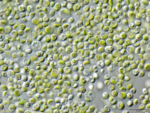
Working towards a hydrogen economy with a wastewater biorefinery: the SmartBioH2-BW project
A biorefinery that uses industrial wastewater and residual material streams is being built in Rheinfelden (Baden). It will have two interlinking bioreactors and will synthesize biohydrogen as well as organic basic materials such as carotenoids and proteins. SmartBioH2-BW is a pilot project run by the Urban and Industrial Biorefineries initiative and funded by the Baden-Württemberg Ministry of the Environment, Climate Protection and Energy Sector.
https://www.biooekonomie-bw.de/en/articles/news/working-towards-hydrogen-economy-wastewater-biorefinery-smartbioh2-bw-project -
Vaccination for plants - 23/01/2023 
Dialogue instead of a chemical maze – new strategy for sustainable crop protection
Climate change creates stress. This provides an opportunity for pests to exploit plant weaknesses and reproduce. For the infested plant, this can be catastrophic and often fatal. But instead of continuing to protect harvest yields with toxic substances as before, the transnational DialogProTec project is now taking a completely new approach: researchers want to intervene in the communication between plants and pests to keep them healthy.
https://www.biooekonomie-bw.de/en/articles/news/dialogue-instead-chemical-maze-new-strategy-sustainable-crop-protection -
Funding Renewable Material of the Year 2023
Competition, Funded by: nova-Institut GmbH, sb_search.searchresult.label.programSubmissionDate: 28/02/2023https://www.biooekonomie-bw.de/en/databases/funding/renewable-material-year-2023 -
Funding ACCELERATE Programme
Funding programme, Funded by: Grünhof GmbH, sb_search.searchresult.label.programSubmissionDate: 12/02/2023https://www.biooekonomie-bw.de/en/databases/funding/accelerate-programm -
Valorization of biological materials - 12/01/2023 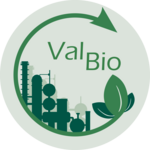
ValBio-Urban brings bioeconomy research to users
Reducing carbon dioxide emissions and the capture and utilization of CO2 are important steps towards achieving a climate-neutral and sustainable economy. Accordingly, as part of the ValBio-Urban research project, an interdisciplinary team from the University of Stuttgart is developing bioeconomic approaches to solutions that will be implemented with companies from Baden-Württemberg.
https://www.biooekonomie-bw.de/en/articles/news/valbio-urban-brings-bioeconomy-research-users -
Press release - 20/12/2022 Strong and biodegradable
A polyester plastic of great mechanical stability, which is also easily recyclable and even compostable: Stefan Mecking, chemist at the University of Konstanz, and his research group present a new material.
https://www.biooekonomie-bw.de/en/articles/pm/strong-and-biodegradable